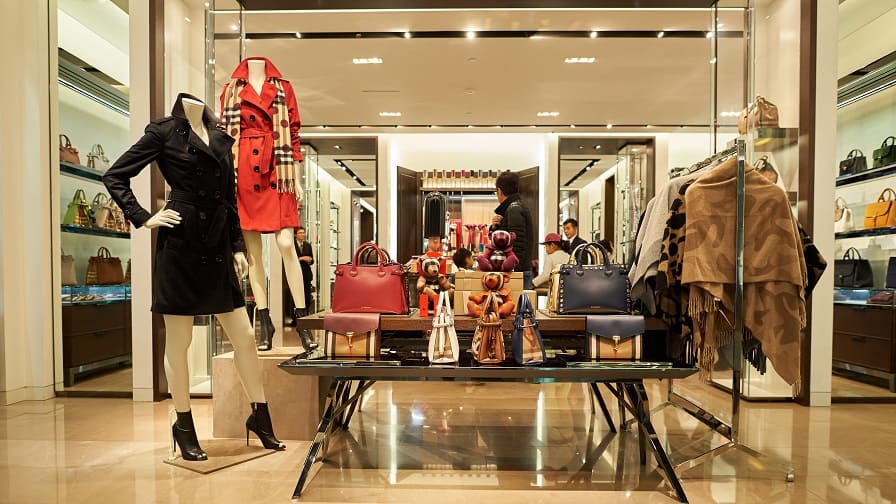The British luxury market has a huge opportunity at its feet. Thanks to a weak pound and the bonus of VAT-free prices for tourists, Britain is the go-to destination for international shoppers looking to get the most out of their luxury purchasing spend.
While China has long been deemed a priority market, the luxury opportunity in the Asia Pacific (APAC) region is now much wider thanks to growing middle classes across the area. E-commerce, underpinned by effective localised digital marketing strategies, offer retailers and brands a channel to luxury consumers in APAC.
Despite APAC being a singular trade region, the individual countries within it are incredibly diverse, and marketing needs to reflect this. A simple translation is not enough to reach these audiences. Do your research – the first rule is to understand what local consumers are searching for and tailor your content to that. Being aware of the nuances of local culture; how language is used and colours are perceived, through to perceptions of non-local brands and understanding of how devices are used to search and purchase, are all key to ensuring the success of a digital marketing strategy.
Using insights from our LIME (local in-market expert) network, we’ve looked at attitudes and opportunities for luxury brands in selected APAC territories.
Thailand
Thailand has a rapidly growing middle class, which means there is an excellent opportunity for luxury brands looking to capitalise on their aspirations and growing levels of disposable income. That said, the luxury market is not yet as mature as in other parts of APAC, which makes the need for a totally tailored approach particularly important.
Thai consumers often prefer international luxury items over those offered by local brands, because there is an expectation of quality which appeals to middle-class aspirations. Narut, one of our LIMEs in Thailand said: “Thais perceive luxury brands from developed countries as being higher quality than domestic brands. Well-known British luxury brands include Burberry, Mulberry, Alexander McQueen, Vivienne Westwood and Jo Malone. They represent prestige, which defines British-made products.”
As for specific tactics, the opportunity for influencer marketing in Thailand is primed. Celebrity and social media culture are widespread, with Instagram being the main channel for influencer marketing engagement. One example of a successful influencer is Chompoo – Araya A. Hargate, a popular Thai-British actress who promotes luxury brands and is known as a fashionista and Thai fashion queen.
South Korea
As we see in Thailand, the growing middle class in South Korea presents a real opportunity. The country has significant power as a burgeoning luxury market. Sun, one of our LIMEs in South Korea, advised that the ‘Made in Britain’ label is an asset here: “In general, British means high quality and dignity as people in South Korea associate the label with heritage and tradition. However, many British brands are not recognised as ‘British’ in South Korea. British brands need to make the most of the association with the ‘British’ label to improve awareness and popularity amongst local consumers.”
Jeonghee, another South Korean LIME, continued: “Luxury brands are usually consumed by the wealthier middle class, and as a result, they are not in conflict with locally produced, cheaper products.” Our conversations with the LIME network tell us that to help achieve cut-through against international competitors it is important to have a bricks-and-mortar presence on the ground, backed up by social media marketing and using local influencers as this will help convey a coherent brand message and counteract counterfeit worries.
China
China is often considered a strong market for British luxury brands, but this doesn’t mean brands can be complacent in their marketing strategies. William, a LIME in China, said: “Most Chinese people don’t know the origin of luxury brands, although British luxury brands sound good to local Chinese people. Dunhill is the most popular luxury brand from the UK in China, and other well-known brands include Burberry, Mulberry, and shoe brand Loake.”
Research suggests that 42% of UK consumers think brands should emphasise their Britishness in the wake of Brexit, but our LIME network has shown that while this can be important, it won’t be well received everywhere. Identifying what makes your products attractive to Chinese consumers is key to building effective online campaigns, that drive engagement and sales. Local insight into product preferences, seasonal trends, payment and delivery expectations is needed to inform this strategy, as well as how Chinese consumers like brands to communicate with them. Social media unique to the territory, such as Weibo and WeChat, are key ways to gain cut-through.
India
Again, in India, there is a solid growing middle class that has laid the foundations for e-commerce growth and expansion. Indira, one of our LIMEs, comments: “Local perceptions of British Luxury brands are very positive in India. People trust British and American luxury brands even more than native brands.”
For some consumers, simply being imported from a more affluent wealthy country constitutes luxury. This is a key consideration for luxury brands, as they must be certain that messaging and strategy conveys true luxury to reach all target audiences. Tactics that encourage consumers to perceive that they are purchasing a product that will deliver not only quality but value for money over time, should be considered. Indira, a LIME in India, explained: “Value for money is important to Indian consumers. Their purchases are mostly driven by perceptions of value, and brands should be aware of this.”
Counterfeit across APAC
The global market for fake goods is estimated to be worth over half a trillion pounds (OECD, 2016). Our LIME network has revealed that concern about counterfeit products resonates across APAC markets, and is at the forefront of consumers’ minds.
William, a LIME in China, said: “I think authenticity is the biggest concern for Chinese luxury shoppers, as counterfeit goods are common. The more popular the brand, the more counterfeit goods there are on the market. Thanks to its popularity in China, Dunhill has the most counterfeit bags in the country. In India, Indira put it simply: “Yes, authenticity and counterfeit goods are a serious cause for concern.”
Brands must ensure their presence is fully localised online to reassure consumers of authenticity. Strong links back to original sites and brands, local content and social media engagement must be maintained as part of an SEO strategy so that local sites rank for local search engines. Any spoof brand sites should be reported to search engines so that they can be targeted for removal.
Tailored for APAC
Interestingly, according to recent research, at 11%, Britain equals the global online sales reach of France and Italy combined, but there is clearly some work to do in terms of messaging, and there is a lot of room to grow this share in the years ahead. There is a huge opportunity in the growing APAC luxury markets, and nuanced, tailored digital marketing is the way to seize it.
Tips for luxury marketing in APAC:
- Create a differentiated strategy for APAC countries in line with individual needs.
- Make more of Britishness in line with reputation- but don’t forget the basics of local strong e-commerce rules.
- Ensure that your localised site is strongly supported and is of a high quality/authentic to fend off fake sites.

